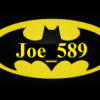
Conrod Ratios
#1

Posted 27 September 2010 - 12:01 PM
#2

Posted 27 September 2010 - 12:02 PM
#3

Posted 27 September 2010 - 12:35 PM
LSJ 86mm 144.84mm 1.68:1(same as B207 and Z20NET)
LNF 86mm 144.84mm 1.68:1
LE5 99mm 143.7mm 1.45:1
From this thread clicky
Sounds like you may have a similar plan to me FYI Z20NET's are much cheaper than B207 2nd hand and essentially the same engine
#4

Posted 27 September 2010 - 12:38 PM
http://www.redlinefo...ng-rod-lsj.html
5.765 (=146.4mm) is the 2.2 rod length. Pin diameter is 20 mm
5.728 (= 145.5mm) is the lsj rond length. Pin diameter is 23 mm
LSJ has a 86mm bore and a 86mm stroke
Some confusing info here...
Edited by Exmantaa, 27 September 2010 - 12:46 PM.
#5

Posted 27 September 2010 - 01:02 PM
Edited by siztenboots, 27 September 2010 - 01:04 PM.
#6

Posted 27 September 2010 - 02:04 PM
L61 94.6mm 141mm 1.5:1
LSJ 86mm 144.84mm 1.68:1(same as B207 and Z20NET)
LNF 86mm 144.84mm 1.68:1
LE5 99mm 143.7mm 1.45:1
From this thread clicky
Sounds like you may have a similar plan to me FYI Z20NET's are much cheaper than B207 2nd hand and essentially the same engine
This was taken from wrong data from jbody.org
Real ones are 146.50mm for the L61 (ratio is 1.54:1)
#7

Posted 27 September 2010 - 03:55 PM
#8

Posted 27 September 2010 - 04:01 PM
And what about the Z22yh ??
same as the se
#9

Posted 13 June 2012 - 08:20 AM
#10

Posted 13 June 2012 - 04:46 PM
those are the specs I found on the web, slightly different to some other sitesL61 - 94.6mm - 146.43mm - 1.548:1
LSJ - 86mm - 145.49mm - 1.692:1 (same as B207 and Z20NET)
LE5 - 98mm - 143.74mm - 1.467:1
#11

Posted 13 June 2012 - 09:46 PM
#12

Posted 06 September 2013 - 02:33 PM
rod ratios ( 148mm ) for Z20LET stroker options
Z22XE 2.2L - 94.6 - 148mm = 1.56:1
X24SFD 2.4L - 99.98mm - 148mm = 1.48:1
#13

Posted 01 January 2015 - 06:11 PM
#14

Posted 01 January 2015 - 07:29 PM
rice burner options Block Rod length Stroke Rod ratio D16A6, Z6, Y7, Y8 137mm 90mm 1.52:1 B16A1, A2, A3 134.4mm 77.4mm 1.74:1 B17A1 131.9mm 81.4mm 1.62:1 B18A1, B1, B20B4 137mm 89mm 1.54:1 B18C1, C5 138mm 87.2mm 1.58:1 H22A1 143mm 90.7mm 1.58:1 H23A1, A4 141.5mm 95mm 1.49:1 K20A, A2 139mm 86mm 1.62:1 K24A 152mm 99mm 1.54:1
And one from the earlier S2000's:
F20C 153mm 84mm 1.82:1
Bye, Arno.
#15

Posted 03 January 2015 - 07:37 PM
=========== stroke rod length ratio GM Z22SE (L61) 94.6mm 141mm 1.5:1 GM Z20LET 86mm 143.1mm 1.66:1 Saab B204 78mm 153mm 1.96:1 Saab B234 90mm 147mm 1.64:1 Honda K20A, A2 86mm 139mm 1.62:1
=========== stroke rod length ratio
Saab B205 78mm 159mm 2,03:1
Saab B235 90mm 153mm 1,7:1
#16

Posted 26 January 2017 - 01:15 PM
VAG 1.8 20v BAM 86mm 144mm 1.67:1 (bore 81mm, comp 9.0:1)
#17

Posted 26 January 2017 - 01:42 PM
What dose any of that mean ?????? are these parts easy to source in the uk ? will any of them fit into a z22se will I need to do other stuff if I should use any of those bits for an engine rebuild.? yes I know I know bugger all but I'm trying to learn.
What this means really is that the period of time a piston spends at tdc/bdc is dependant on the length of the connecting rod relative to the crankshaft stroke. So, with a short rod length as the crank swings around tdc the angle of the rod will change dramatically causing the piston to move in the bore added to the actual mechanical stroke change, this gives a faster piston acceleration/deceleration which can be an advantage or disadvantage depending on other factors of the engine design, like a fast acceleration could be good for large intake ports to get the air moving early?
However there are other issues like the extra side loading on the piston/bore due to the angle of the rod on the power stroke plus extra forces on the piston due to the increased speed changes at higher rpm..
Does that help at all...
#18

Posted 26 January 2017 - 02:41 PM
What dose any of that mean ?????? are these parts easy to source in the uk ? will any of them fit into a z22se will I need to do other stuff if I should use any of those bits for an engine rebuild.? yes I know I know bugger all but I'm trying to learn.
What this means really is that the period of time a piston spends at tdc/bdc is dependant on the length of the connecting rod relative to the crankshaft stroke. So, with a short rod length as the crank swings around tdc the angle of the rod will change dramatically causing the piston to move in the bore added to the actual mechanical stroke change, this gives a faster piston acceleration/deceleration which can be an advantage or disadvantage depending on other factors of the engine design, like a fast acceleration could be good for large intake ports to get the air moving early?
However there are other issues like the extra side loading on the piston/bore due to the angle of the rod on the power stroke plus extra forces on the piston due to the increased speed changes at higher rpm..
Does that help at all...
I think the side loading/friction on the pistons is a key thing. Apparently (from what I've read (page 11 of this: http://hpwizard.com/...Lubrication.pdf)) around 50% to 75% of engine losses are due to the piston friction, of which the rings are around 20%. Thus the more the rock/twist in the cylinder (due to short rods) would imply more and more friction from the piston side walls.
I've seen how worn out the skirts were on several sets of Z20LET pistons and it's clear there is a lot of rubbage on them.
Edited by Nev, 26 January 2017 - 02:42 PM.
#19

Posted 26 January 2017 - 03:32 PM
there is also an implication to the mechanical advantage of ignition timing and I am focusing on driveability in my latest update
#20

Posted 26 January 2017 - 04:35 PM
Indeed there is a lot of science involved etc but, I don't know if the term "rubbage" is used? ;-)
Not sure how much you might gain/lose with experimenting on rod length on a road car engine other that at extreme ratio's?
Could be costly on bespoke pistons?..
1 user(s) are reading this topic
0 members, 1 guests, 0 anonymous users



















